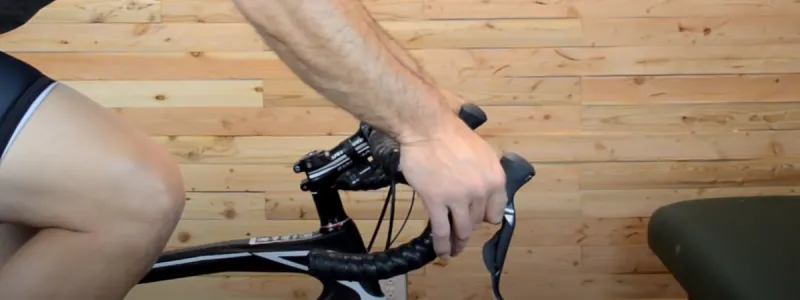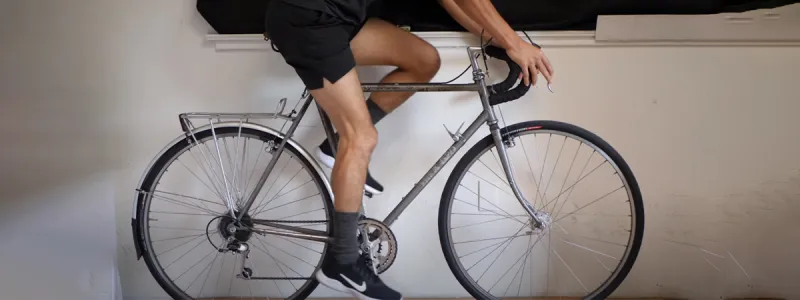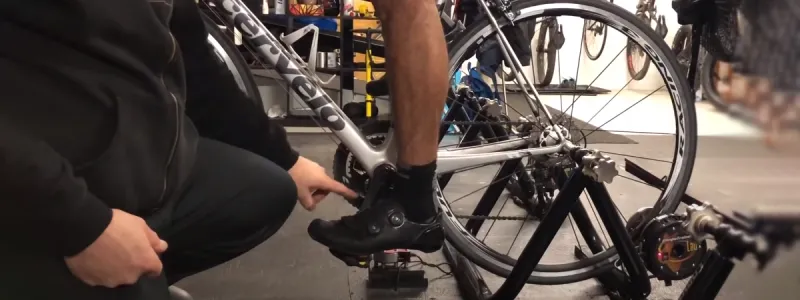Cycling pressure can compress nerves, causing neurogenic hand and wrist pain. Improperly managed wrist fractures can lead to bone death. Conditions like carpal tunnel syndrome and ulnar nerve pain (handlebar/cyclist’s palsy) can cause aching sensations. Unsuitable riding positions may cause finger compression. Prolonged cycling may cause ulnar nerve damage.
A saddle positioned too far forward increases pressure on the hands. Consider handlebar shape and do hand exercises. Finding the best saddle can help mitigate this issue. Fitting gloves can improve comfort.
Avoid turned-in brake hoods and opt for narrower handlebars. Awkward hand positions can compress nerves and tendons. Proper road bike positioning is crucial for a comfortable, injury-free ride. Setting your bike saddle forward too far increases hand pressure.
In this blog post, we’ll discuss the causes, risks, and prevention of too much pressure on hands when cycling.
Too Much Pressure On Hands When Cycling: 5 Danger Signs

If you experience hand pressure while cycling, learn about the common causes, from incorrect bike fit and handlebar design to lack of padding in gloves; understanding these factors can help improve your cycling performance.
Incorrect Bike Fit and Posture
An improper bike fit and posture often cause hand pressure. If the bicycle does not fit the rider’s height, weight, and body type, it unnecessarily strains the hands and arms. Improper saddle positioning forces you to bear excess weight on your hands. Poor posture, such as slouching or sitting upright, can also cause excessive hand pressure.
Improper Handlebar
The design of the handlebar also contributes to hand pressure. Narrow or wide handlebars force the rider to hold them in an uncomfortable position, causing hand pain and numbness.
An incorrectly shaped or sized handlebar, a saddle positioned too high or tilted downward, and improper hand placement on handlebars or hoods can all cause discomfort.
An excessively wide handlebar can lead to shoulder and wrist problems. It is crucial to address these factors to ensure a comfortable and pain-free cycling experience.
Lack of Padding in Gloves
Insufficient padding in gloves aggravates hand pressure. Road shocks and vibrations can cause fatigue and soreness in the hands and fingers of riders.
Tight Grip and Tension in Hands and Arms While Cycling
Hand and wrist pain associated with cycling is standard when you carry too much weight on your hands or if your hands and wrists are in an awkward position.
The force cannot be efficiently transmitted to your upper limb, where larger muscles can absorb it, increasing pressure on your hands and wrists.
Cycling with Too Much Pressure On The Hands: 5 Risks
Cycling with excessive pressure on the hands can lead to numbness, reduced grip strength, and chronic pain. Understanding the risks associated with this issue is crucial for avid cyclists.
- Placing too much pressure on your hands when cycling might leave you numb or tingling your hands and fingers. Long-term compression of nerves in your hands causes this condition.
- Reduced grip strength and control can make it difficult to steer or brake the bike when cycling. Injury and accident risks can increase.
- Your cycling experience can be hindered by chronic pain and discomfort in your hands. If this pain worsens, you may struggle to perform other tasks requiring your hands.
- Damage to nerves and tissues in your hands may cause carpal tunnel syndrome, which can be very painful and require surgery.
- Excessively pressuring the hands while cycling can lead to overuse or repetitive strain injuries. When an injury is severe, recovery can take months or even years.
Excessive Hand Pressure When Cycling: 6 Tips For Prevention
With proper techniques and equipment, cycling can reduce hand pressure and enhance your cycling experience. Although cycling is excellent for fitness, it may cause hand discomfort due to strain.
Sitting Position

One of cyclists’ most common issues is pressure on their hands, which can cause numbness, tingling, and pain. To prevent this from happening, it’s essential to have a correct sitting position when cycling.
Maintaining an appropriate sitting position prevents excessive hand pressure when cycling. Here are some tips.
- Proper Bike Fit and Saddle Change: Check the fit of your bike and make sure it is comfortable and supportive. This can be achieved with the help of a professional bike fitting.
- Upright or Leaning Forward Position: Your upper body posture should be upright or slightly leaned forward, with your lower back slightly arched and your shoulders relaxed.
- Correct Hand Positioning on Handlebars: Holding the handlebars too tightly or putting your hands in the wrong position may cause unnecessary stress in your hands. Use a grip that fits your hand’s shape and keeps your hands relaxed.
- Use of Gloves or Grips: Gloves and grips can help relieve pressure on your hands and provide extra cushioning.
Tyre Pressure
Tyre Pressure is one of the common causes of hand pain when cycling. Extra pressure causes vibration in your cycle. A bike with proper tire pressure rides smoothly, rolls quickly, and avoids flat tires. Different bike tires require specific PSI ranges.
Tires for kids need 20-40 PSI, while those for narrow road bikes need 80-130 PSI. Medium tires on hybrid bikes need 50-70 PSI, while thick mountain bike tires should be filled with 30 PSI for off-road riding and 50 PSI for on-road riding. For optimal performance, adjust your tire pressure accordingly.
Relaxed Arm and Shoulder Position
A flexible arm and shoulder position can aid in maintaining flexibility and a light grip on the handlebars. Clenching onto the handlebars or riding in an overly tense position can cause hand pressure.
Proper Foot Placement on Pedals

Foot placement and upper body posture can reduce hand pressure. Here are some tips:
- You should place the ball of your foot on the pedal, not the arch or heel.
- Pedals should not be gripped with toes or ankles overextended.
- Stabilizing and supportive cycling shoes are essential.
Upper Body and Hand Stretching Exercises
Regular stretching and conditioning exercises help reduce the risk of hand pain while cycling. Keep your hands flexible and limber by shaking, rolling your wrists, and stretching your fingers. Push-ups and rows can strengthen your upper body, improving your cycling performance.
Smoother Terrain or Alternate Routes
Your cycling terrain can also affect the pressure on your hands. Choose smoother routes to reduce shock and vibrations on your hands. You can also shake out your arms and hands frequently by changing your hand position.
Conclusion
A comfortable cycling experience depends on avoiding too much wrist and hand pressure. Understanding these issues’ causes, risks, and prevention is crucial for preventing long-term damage to your hands and wrists.
Cycling can be significantly improved by following simple steps, such as fitting your bike correctly and adjusting the saddle, using suitable gloves, and relaxing your arm and hand muscles. Take the precautions and enjoy the ride. Don’t let hand discomfort stop you from enjoying one of the best outdoor activities.


